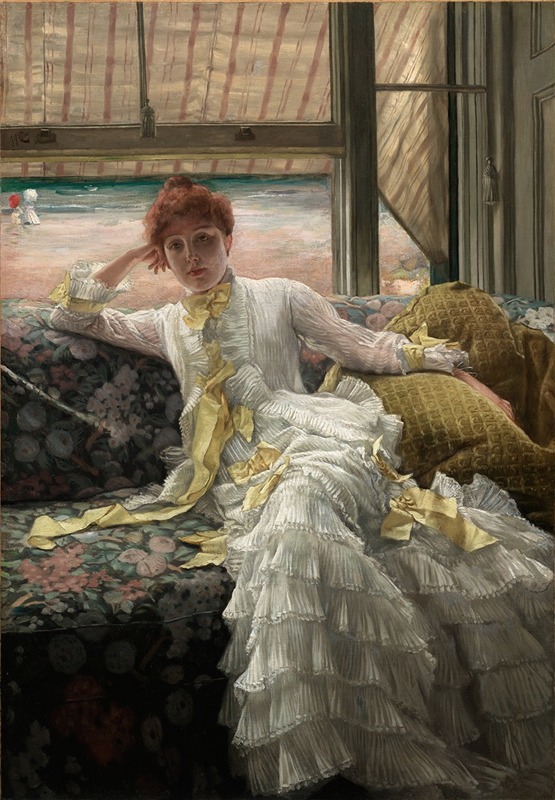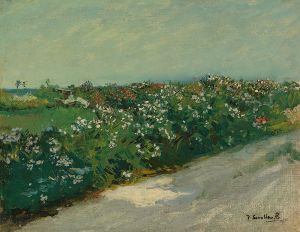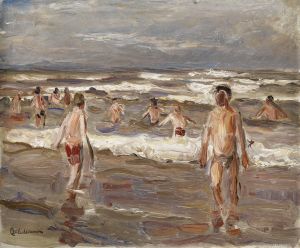
Seaside
A hand-painted replica of James Tissot’s masterpiece Seaside, meticulously crafted by professional artists to capture the true essence of the original. Each piece is created with museum-quality canvas and rare mineral pigments, carefully painted by experienced artists with delicate brushstrokes and rich, layered colors to perfectly recreate the texture of the original artwork. Unlike machine-printed reproductions, this hand-painted version brings the painting to life, infused with the artist’s emotions and skill in every stroke. Whether for personal collection or home decoration, it instantly elevates the artistic atmosphere of any space.
James Tissot's painting "Seaside" is a notable work by the French painter, who is renowned for his detailed and vibrant depictions of contemporary life in the late 19th century. Tissot, born Jacques Joseph Tissot in 1836 in Nantes, France, was a prominent figure in both the French and British art scenes. He is best known for his genre paintings that capture the fashion, social customs, and leisure activities of his time.
"Seaside" is one of Tissot's many paintings that reflect his fascination with the leisure pursuits of the upper-middle class. Although specific details about the creation date and the exact location depicted in "Seaside" are not widely documented, the painting is consistent with Tissot's style during the 1870s and 1880s, a period when he produced many works featuring elegant figures in outdoor settings.
The painting typically features a group of well-dressed individuals, often women, enjoying a day by the sea. Tissot's attention to detail is evident in the intricate rendering of the clothing and accessories, which reflect the fashion of the time. The seaside setting is depicted with a keen eye for the natural environment, capturing the light and atmosphere of the coastal scene.
Tissot's work is characterized by its narrative quality, often suggesting a story or capturing a moment in time. In "Seaside," the figures are usually engaged in leisurely activities, such as walking, conversing, or simply enjoying the view, which was a common pastime for the affluent classes during this era. The painting reflects the social dynamics and cultural norms of the period, offering insight into the lifestyle and values of the people Tissot portrayed.
Throughout his career, Tissot was influenced by various artistic movements, including Realism and Impressionism, although he maintained a distinctive style that set him apart from his contemporaries. His ability to blend meticulous detail with a sense of immediacy and life is evident in "Seaside," as in many of his other works.
Tissot's paintings were well-received during his lifetime, and he enjoyed considerable success both in France and England. After moving to London in 1871, he became a popular figure in the British art scene, where his works were exhibited in prestigious galleries and purchased by wealthy patrons.
"Seaside" exemplifies Tissot's skill in capturing the essence of his subjects and their environment, making it a valuable piece for understanding the cultural and social context of the late 19th century. Today, Tissot's works, including "Seaside," are appreciated for their historical significance and artistic merit, and they continue to be studied and admired by art historians and enthusiasts alike.


















